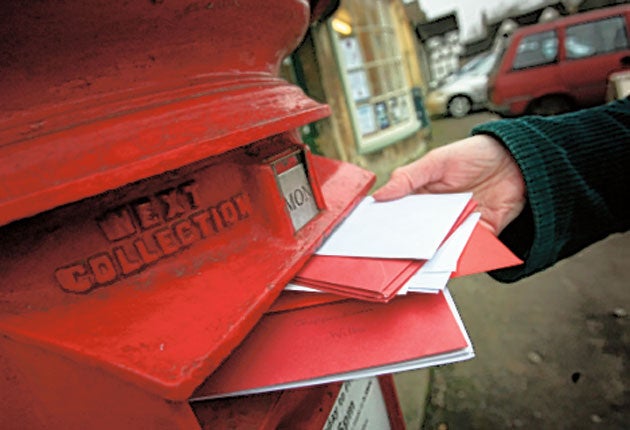The Timeline: Royal Mail

Fit for a king, 1516
The foundations of a national postal service are laid down by Henry VIII. In 1516, he establishes the position of Master of the Posts, a role which evolves into Postmaster General, a Cabinet-level ministerial post. Sir Brian Tuke is appointed the first Master of the Posts and begins to maintain relays of horses and messengers on important routes. Officially only the court can use them, but increasingly, private letters are carried.
Going public, 1635
The Royal Mail service is made available to the public by Charles I. Postage is paid by the recipient, who can choose whether or not to accept the mail and incur the charge. Progress to the service is interrupted in 1642 by the English Civil War.
The Royal Mail, 1660
The General Post Office is established by Charles II. All post is transferred from the post office of origination to distribution points or sorting stations. From there, the post is then sent on for delivery to the receiver of the post. The postal service is known as the Royal Mail because it is built on the distribution system for royal and government documents.
Stamp of approval, 1839-1840
The Uniform Fourpenny Post is introduced in December 1839 and is the first time that the service has a pre-paid letter rate. A a month later, it is replaced by the Uniform Penny Post, after the public's reaction to such a high rate. A few months later, the first adhesive stamp arrives, the Penny Black. Postal stationery and envelopes also begin to appear.
Pillar box green, 1852
The first pillar boxes are erected in Jersey, with ones being installed in mainland Britain the following year, though the postboxes are olive green. Towards the end of the 19th century, there are between six and 12 mail deliveries per day in London from 7.30am to7.45pm, allowing Londoners to exchange multiple letters throughout the day.
Going corporate, 1969
The Post Office Act 1969 means that the General Post Office ceases to be a government department and becomes a statutory corporation. The office of Postmaster General is replaced by a chairman and chief executive officer, and the word "General" is dropped from the organisation's name.
A new name, 2000
The Post Office renames itself Consignia. This proves to be highly unpopular with both the public as well as the organisation's employees, and the Communication Workers Union boycotts the new name. In 2002, the organisation becomes Royal Mail Group plc.
Privatisation, 2010
Business Secretary Vince Cable gives details of the Postal Services Bill, which is designed to pave the way for the Royal Mail's privatisation. He announces that private buyers will be allowed to own up to 90 per cent of Royal Mail, while the Post Office may be mutualised.
Subscribe to Independent Premium to bookmark this article
Want to bookmark your favourite articles and stories to read or reference later? Start your Independent Premium subscription today.

Join our commenting forum
Join thought-provoking conversations, follow other Independent readers and see their replies